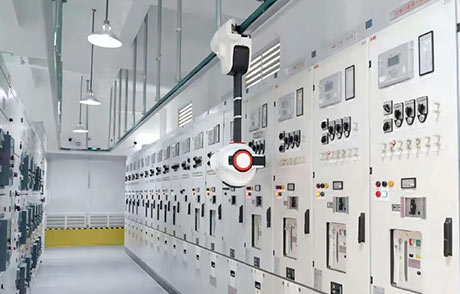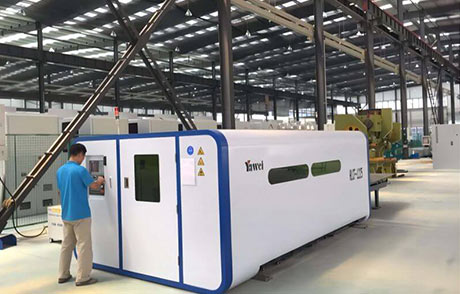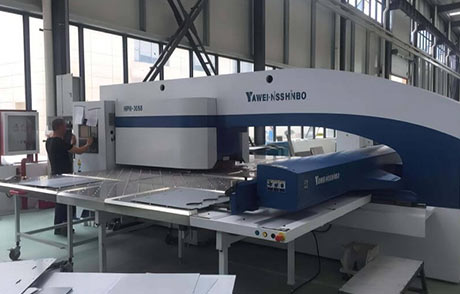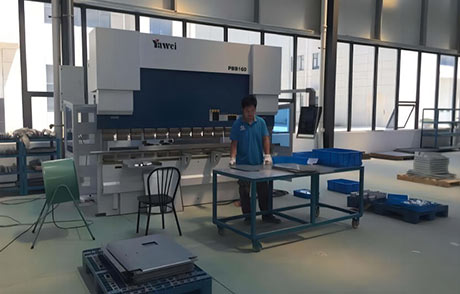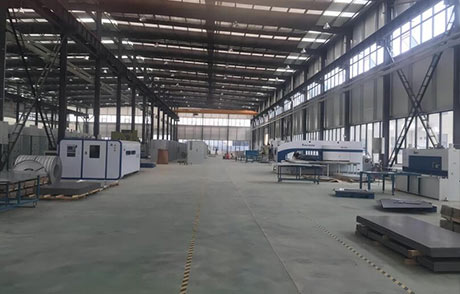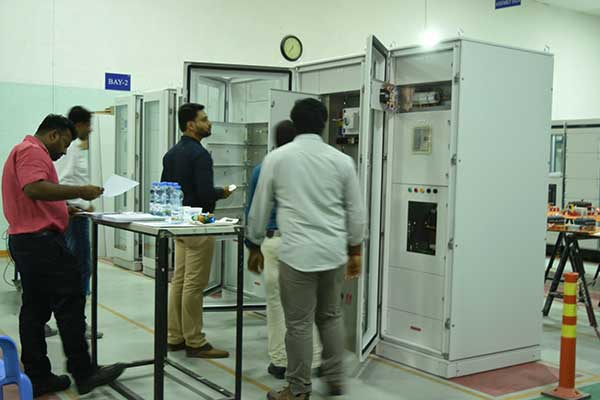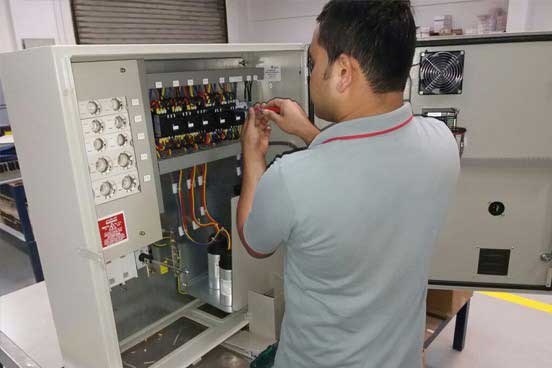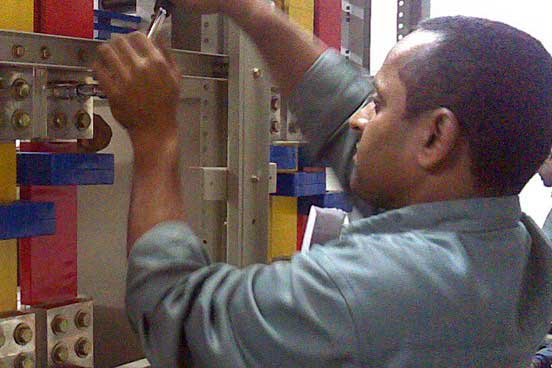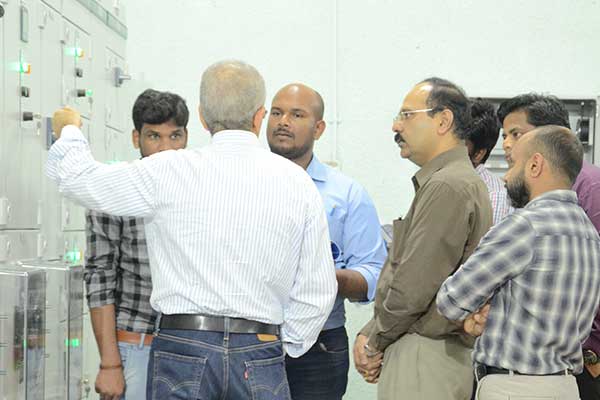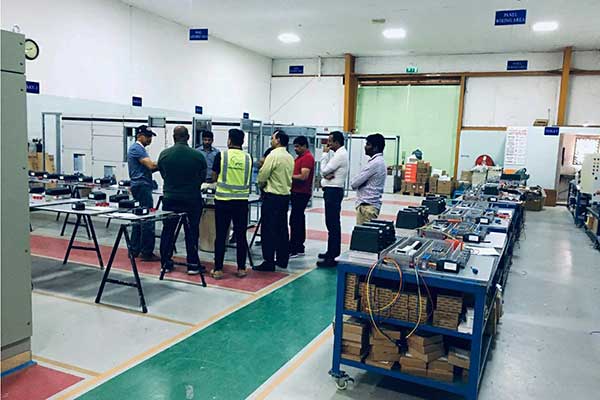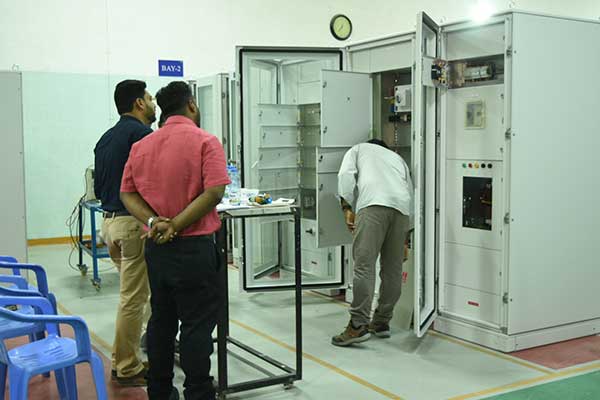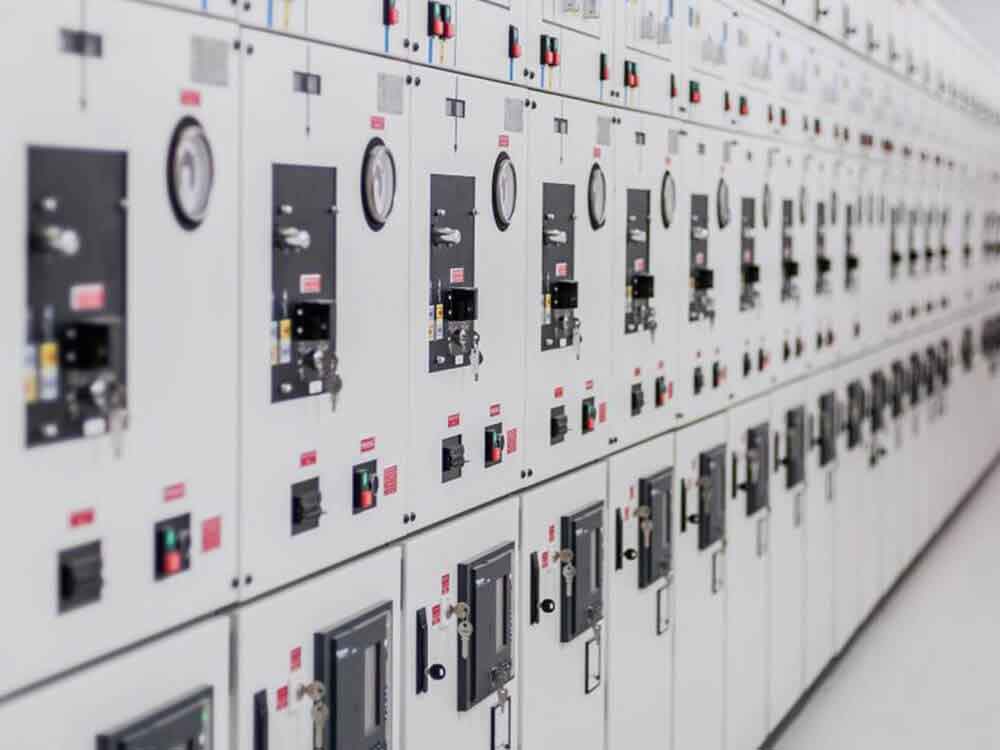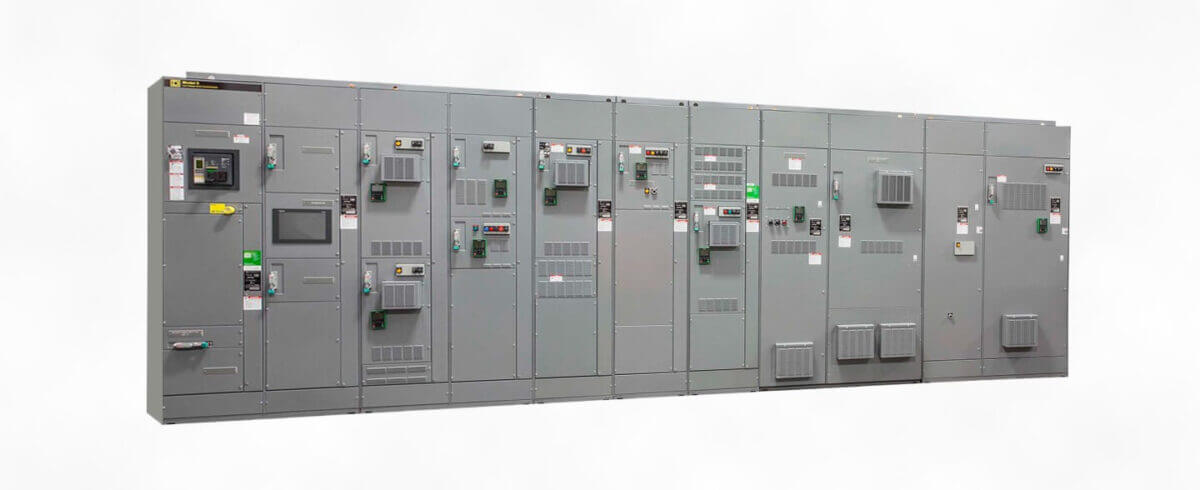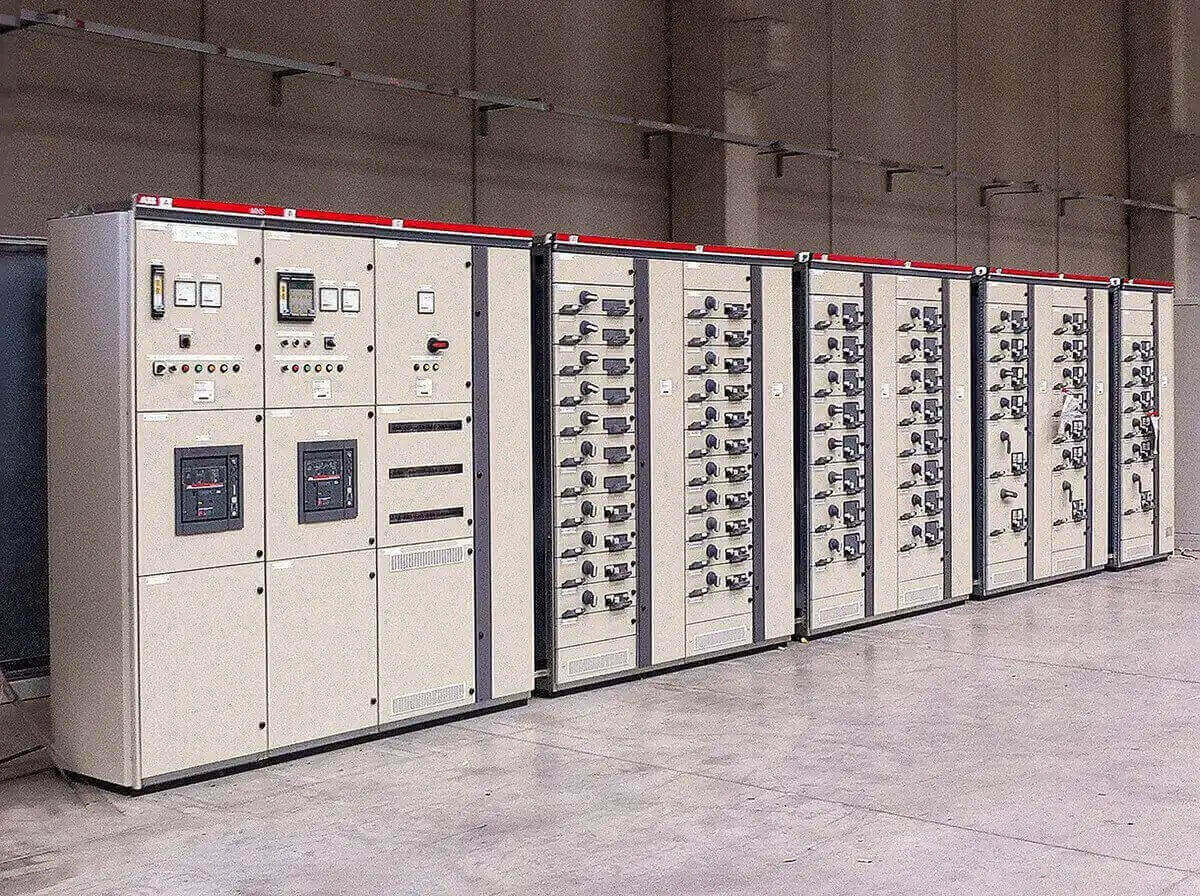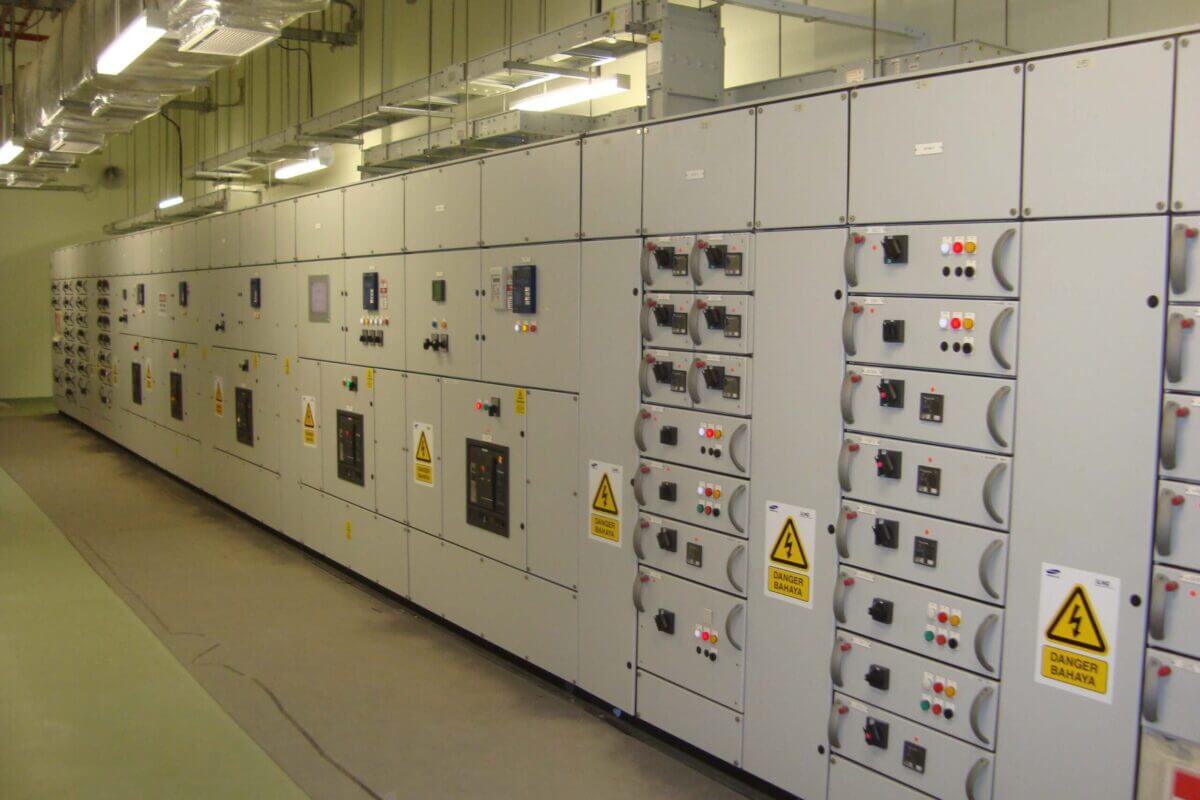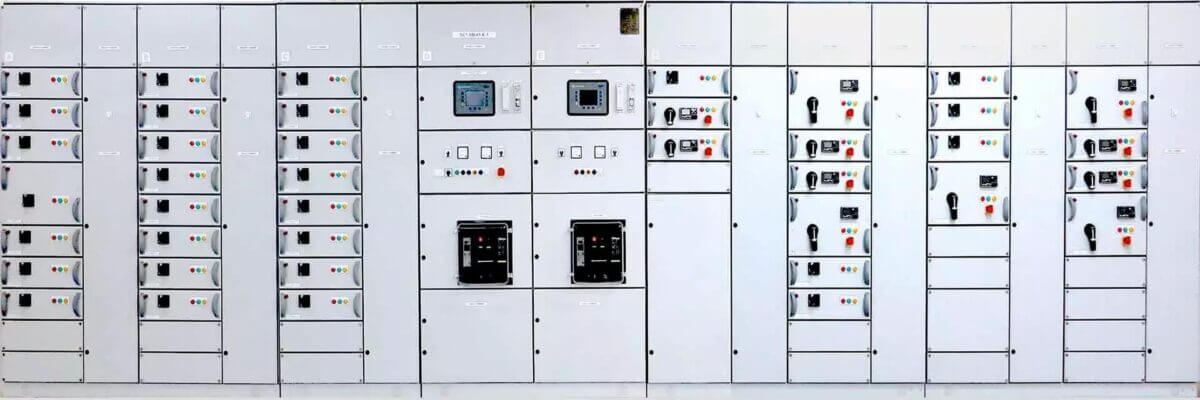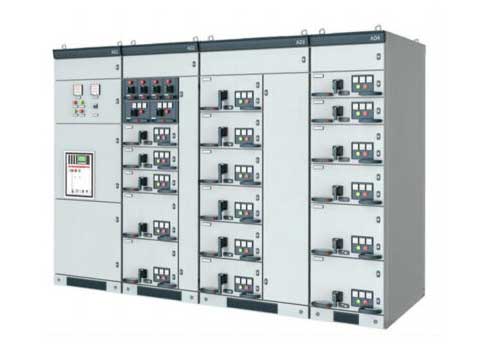
Whatoop Motor Control Center
Motor Control Center (MCC) is a centralized assembly of motor starters, drives, and other related electrical equipment, designed to control and protect electric motors in various industrial applications. MCCs play a crucial role in improving the operational efficiency and safety of industrial processes.
Whatoop, as a leading motor control center manufacturer, specializes in the design, production, and installation of high-quality Motor Control Centers. With over three decades of experience, we have honed our expertise in developing cutting-edge MCC panels that meet the specific needs of our clients. Our state-of-the-art production facility allows us to manufacture over 5,000 panels annually, catering to the requirements of more than 200 customers from diverse sectors.
Our Motor Control Centers have achieved remarkable success and recognition in the market, thanks to their exceptional performance and reliability. We have obtained a wide range of electrical certifications, including CCC, CE, UL, and RoHS, which further attest to the quality and safety of our products.
Featured Electrical Motor Control Center
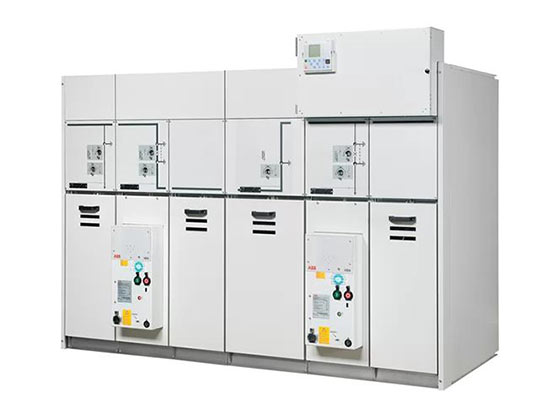
Medium Voltage Motor Control Center
The Medium Voltage Motor Control Center (MCC) is a comprehensive solution for the control and protection of medium voltage motors. It provides reliable and efficient control and monitoring of motor operations, with advanced features such as soft starting, overload protection, and fault detection.
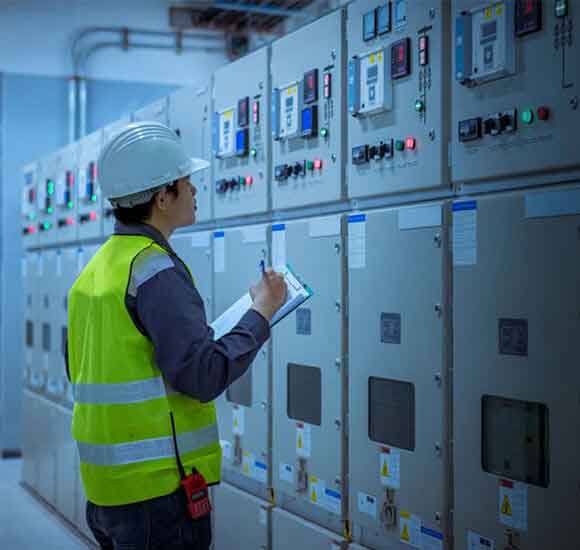
Custom Motor Control Center Features
We provide low-voltage and medium-voltage switchgear for areas including Agriculture, manufacturing, automotive, logistics…
Whatoop Motor Control Center Application
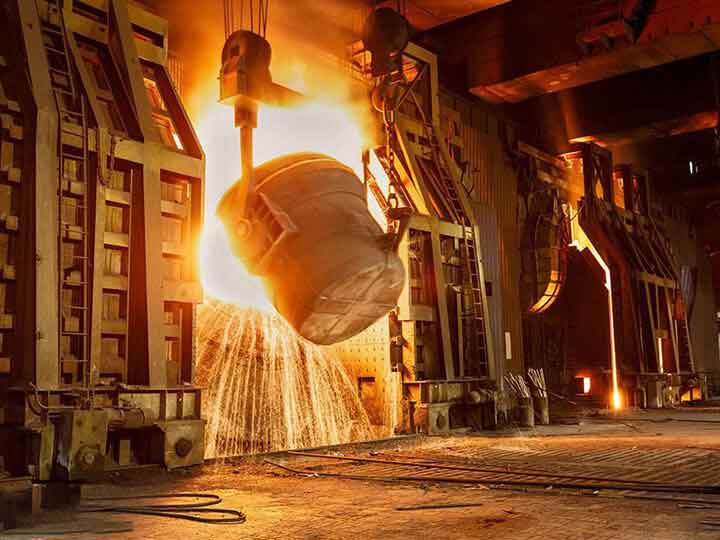
Metallurgical Industry
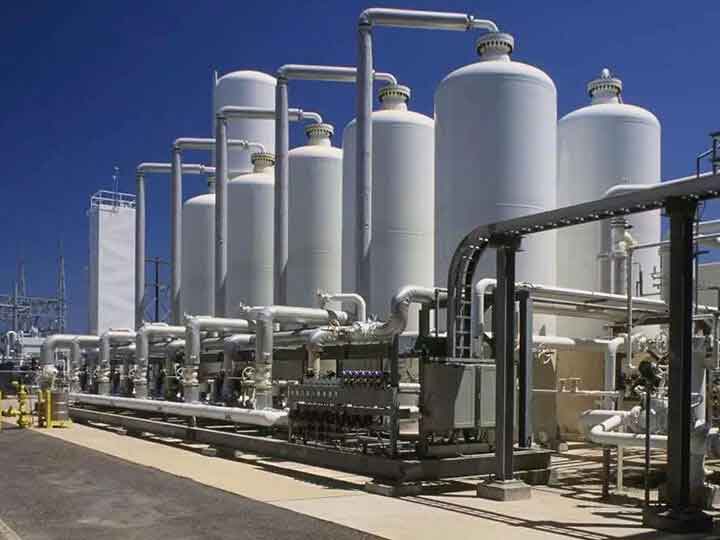
Chemical Industry

Airport
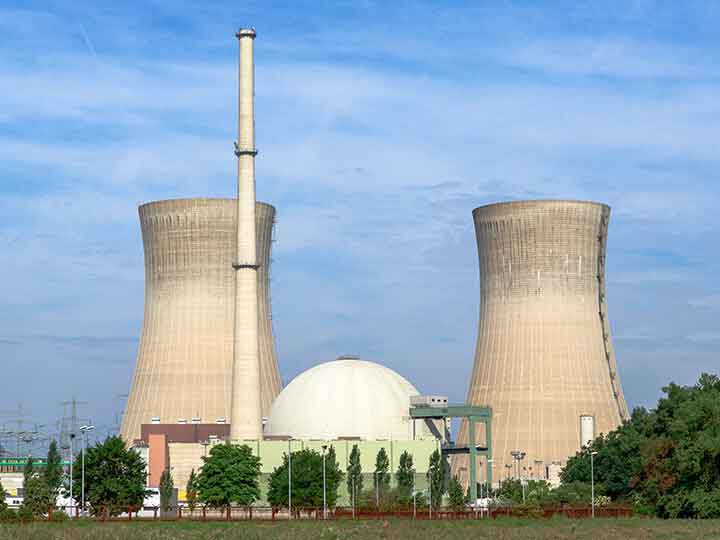
Power Plant

New Energy Field
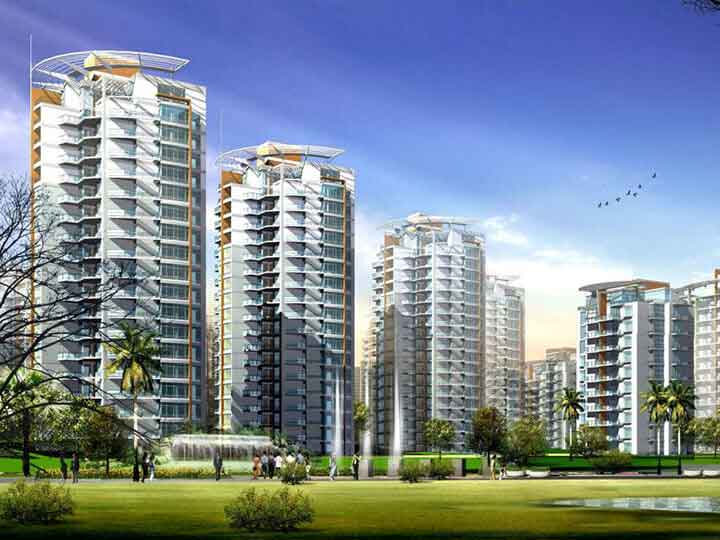
Residential Building
Steps To Custom Motor Control Center
Order Review & Confirmation
Upon receiving an order, we carefully review it to ensure that we fully understand the customer’s requirements. We then confirm the order with the customer and send a confirmation letter.
We have a team of experienced engineers who develop a detailed design for the switchgear system. This ensures that the system meets the required specification and is customized to the customer’s needs.
We manufacture and assemble the switchgear system in-house, using state-of-the-art equipment and skilled technicians. We perform quality control inspections during the production process to ensure that the system is built to the required standards.
We conduct a series of tests to ensure that the switchgear system operates safely and meets the required specification. Once testing is complete, we ship the system to the customer’s site.
We provide shipping and installation services to ensure that the switchgear system is installed correctly and safely. We provide documentation and support to assist the customer in the installation process.
After-sales Support
We provide after-sales support to our customers, including training on how to operate and maintain the switchgear system, troubleshooting and repair services, and ongoing maintenance and service contracts.
Motor Control Center FAQ Guide
A 600 V class motor control center (MCC) is described in this paper, including its design, basic concept, and testing. The main keywords of this paper are the design guide of the motor control center, the layout of the motor control center, the MCC diagram, the wiring diagram of the motor control center, and the MCC panel assembly.
An electric motor is a device that uses electrical energy to operate mechanically, such as pumps, fans, and blowers. With the development of industry, different industrial processes have higher and higher requirements for automation and mechanization.
Mechanization of different industrial processes requires many motors, so in order to control all these motors, one MCC is required. In the image below you can see the MCC, a large enclosure that houses the main motor control equipment.
The MCC is capable of plugging in and out of control components so there is no need to wire the unit. MCCs consist of busbars and other control equipment that can be used to control motor operation, or components can be placed in an integrated panel.
MCC also has different motor starting methods, such as DOL and star-delta starters.
- Busbar
- Breaker
- Electromagnetic contactor
- Contactor Auxiliary Contacts
- Relay control
- Control transformer
- Cable mount control panel enclosure
- Limit switch
MCC can be used to control the operation of multiple motors, as we discussed above, MCC consists of multiple components such as motor starters, bus bars, control devices, etc. All of these components are used to control the motors, which are housed in panels made of a mix of iron metal and carbon iron.
Busbar:
The bus bar is a bar made of brass, copper, etc. The main function of the bus bar is to provide or distribute the required power for electrical equipment. Therefore, in an MCC, the bus bar will act as a power divider. The main advantage of using bus bars in an MCC is that we can eliminate the wiring of multiple components, thus reducing the size of the MCC and the number of parts in it.
So we can easily use the bus bar to connect the electrical equipment in the MCC, which is also helpful for locating errors. With the help of bus bars, we can easily solve the problem in MCC.
Overload relay:
These relays will protect the motor from overheating which may be caused by overloading of the driven machinery. It can also be caused by low voltage levels or a phase loss in a three-phase system. Therefore, when excessive current is consumed within a specified time, the overload relay will open and the motor will be disconnected from the power supply.
This relay allows temporary overloads without any damage to the motor and prevents overloads that could damage the motor.
MCB:
The purpose of the MCB is to break the circuit when there is too much current in the circuit or when the electrical load exceeds capacity.
Control Transformer:
Sometimes it is necessary to operate the control circuit at a lower voltage than the power circuit. So to reduce the voltage level we can use a control transformer
Electromagnetic contactor:
Magnetic contactors are used in MCCs to start or stop motors. Most of the time there will be a remote control device to start and stop the motor, for this we can use a contractor. The operation of the magnetic contactor will be based on the principle of electromagnetism.
Time delay relay:
The main purpose of a time delay relay is to provide on-delay and off-delay timing. So this device can be used for automatic time setting, this device can be combined with other control equipment in MCC, such as an electromagnetic contactor.
Limit switch:
This component is used to provide a signal when a specified limit is reached, such as when an overload exists. Limits can be the rotational speed of the machine, the location of machine parts, etc. We can use this device to replace human operators and it can be used where human operators cannot.
The main uses of MCC are as follows:
1) Motor start
The starting of the motor is an important process, and the starting of the motor should be slow and gradual, which is conducive to protecting the machine. Some industrial machines can be damaged if initially run very fast instead of gradually increasing the machine speed.
2) Operation control
The equipment shall maintain the desired operating speed and characteristics. Thus, by maintaining or controlling the operating speed, it protects motors, machines, materials, and operators.
3) Stop
The MCC must be able to provide a quick stop of the motor because in some cases the machine must be stopped quickly and this should be done by the MCC. Some industrial machinery must perform an emergency stop.
4) Reverse
In an industrial process that needs to change the direction of rotation of a machine, this should be easily done. In some cases, continuous changes of direction are required in industrial processes.
5) Anti-damage
The machine should be protected from any damage as it can cost a lot. An example of this is preventing machine buildup on conveyor belts. Therefore, the machine must perform necessary actions such as reverse, stop, and deceleration. The MCC must control the machine according to the process requirements.
6) Motor protection
The MCC must protect the motor from
- Overcurrent
- Overload
- Low voltage
- Phase failure
- Reverse protection
- Ground Fault Protection
Since the mechanization of many industrial processes requires a large number of motors, a Motor Control Center (MCC) panel is required to regulate them. MCC can be plugged into the control element and can be plugged and unplugged without wiring.
The MCC will consist of busbars and other control equipment that can be used to control the operation of the motors and place components in integrated panels. The MCC also supports various motor starting methods, including DOL and star-delta starters.
The motor control center includes feeders for the motors and blowers. The feeder is designed according to the rated power of the motor. Most MCCs offer an auto/manual option. Motors with manual devices can be operated manually.
Motor control centers are classified. We can classify motor control centers according to the type of supply voltage and how they operate.
1) Based on the supply voltage
- Low voltage MCC
- Maximum voltage MCC
1. Low voltage MCC
Low-voltage motor control centers are typically used for low-current three-phase motors from 208 V to 600 V.
2. Maximum voltage MCC
Maximum voltage MCCs are used for large motors operating at 2300V to 15000V. It uses a vacuum contactor for switching and also has a separate switch room and power control room.
2) Based on their operations
- Manual
- Semi-automatic
- Automatic
1. Manual control
Therefore, in this type of MCC operation, the operator needs to go directly to the controller location in case any changes need to be made. Basically, it’s a simple device that connects a motor directly to a line. This type is used to control motors up to 10 hp. The manual operation of the starter is an ON-OFF switch that can be operated manually or as a safety device.
2. Semi-automatic control
The operation of this type of MCC is carried out by buttons, limit switches, pressure switches, etc. This type of MCC is also composed of certain sensing devices to control the action of electromagnetic contactors or starters. The starter connects the motor to the line, and the button will control the starter coil.
Therefore, the control panel can be located away from the motor or starter. An operator must perform certain actions, such as starting or stopping a motor, but does not need to travel to the location of the motor or starter to perform the process.
3. Automatic control
In this MCC operation, there will be a control circuit that will consist of certain sensing devices. This control circuit can start or stop the motor and stop the motor in any faulty condition such as motor overload, excessive current, etc.
During the design selection phase of the MCC, the design engineer specifies the components of the panel. Each MCC has its own requirements depending on the application of the motor. Some common components exist in almost all applications. all these are:
- Motor starter.
- Overload relay
- Circuit breakers and fusible switches.
- Start and stop buttons.
- Indicator lights for each phase.
In an MCC, you will find that each motor controller has its own control and protection, which is required by design. This panel in the picture has many controls that control more than one load. It has the following control components:
- Breaker.
- Contactor.
- Solid State Relays (SSRs).
- Control relay.
- PLC controller.
- Easy installation
- Can save floor space
- Scalability is another feature of MCC as we can add sections and units to it.
- Increased security level
- Faster operation
- Centralized operation
- Remote control with interlock
- Downtime can be reduced as we can easily detect issues through the MCC and faulty parts can be unplugged
- Ship
- Refinery
- Hotel/mall
- Power plant
- Steel mill
- Electrical service – We have to determine if the service is AC or DC and if AC then frequency and number of phases must be considered in addition to voltage.
- Motor – The motor must be connected to electrical service and ensure that the motor is sized for the machine load at the HP rating. We also have to consider the speed and torque of the motor.
- The controller should be able to start, stop and reverse the motor operation as required
- The controller must be placed where it will not be affected by certain environmental conditions such as rain, snow, dirt, oil, or lubricants.
- Ampacity – We should consider its ampacity when choosing an MCC, ampacity is the maximum amount of current that a horizontal bus can handle
- We also have to consider the level of fault current available when choosing, which is basically the amount of current that will flow in either situation.
- The bus material used for the electrical bus must also be considered.
- The feeder is another important part of the MCC, we have to consider how the feeder connects to the MCC. There are two types of connections, one is overhead and the other is underground. The power cords that power the MCC are large and numerous. So if we know the feeder cable details, it might be useful to do the cable termination and avoid hard-to-bend wires.
- We should also consider operating conditions such as full load current, locked rotor current, non-inductive current, number of poles, and the total number of expected operations.
When you are responsible for setting the specifications of the MCC, you should be clear and complete for the procurement team. Key data for any MCC should include the following:
- Operating Voltage.
- A number of stages.
- current per load.
- Frequency.
- The protection level for each load.
- Recommended maximum size. For your control room.
- The IP rating of the enclosure.
- Power cord size to ensure that the panel has suitable openings for cable entry.
- Short circuit rating.
Be sure to check the following data with your MCC supplier:
- Such as building a map.
- Test certificate.
- All datasheets for all components.
- The manufacturer of the MCC should be the manufacturer of the main components.
- Installation Information.
- The manufacturer of the components should have at least 5 years in the industry.
- Motor control centers should have spare control panels for the most critical loads.
- If the organization has an inventory, make sure the components of the MCC are identical in the inventory.
- List of free parts.
MCCs are used to control multiple motors from a centralized location. The PCC (Power Control Center) is a means of supervising and monitoring the voltage and power system. Power Control Center – PCC – for power control and distribution. They have the following components:
- Breaker.
- Monitoring equipment.
- Control device.
The design of PCC should ensure the breaking capacity, IP protection, and temperature rise required by the power system. It should also be designed for easy termination and connection of incoming and outgoing cables. This requires adequate spacing and size.
MCCs are used to control and protect motors from one location and have low voltage ratings. They power motors, not general loads. The switchgear has a higher voltage, has protection and control devices, and supplies power to transformers, MCC busbars, and other loads.
Motor control centers are usually located downstream of the switchgear. In some cases, the switchgear supplies power to the switchboard, from which the MCC supplies power. Switchgear has batteries, and each battery powers a specific set of loads, not just one motor. In the event of a failure, the battery will isolate the source and keep all other loads energized.
Another important use of these batteries is power isolation for maintenance purposes.
Dual front MCC panels or back-to-back, are panels for the front and rear motor control sections. It offers shorter lengths but is more difficult to maintain. The use of both front and rear directions shortens the overall length of the bus bars and MCC panels.
Unfortunately, dual-front MCC panels can be more difficult to maintain than single-front panels.
Whether it’s a task as daunting as building a tall building or as mundane as heating food, electric motors play an important role in our lives.

